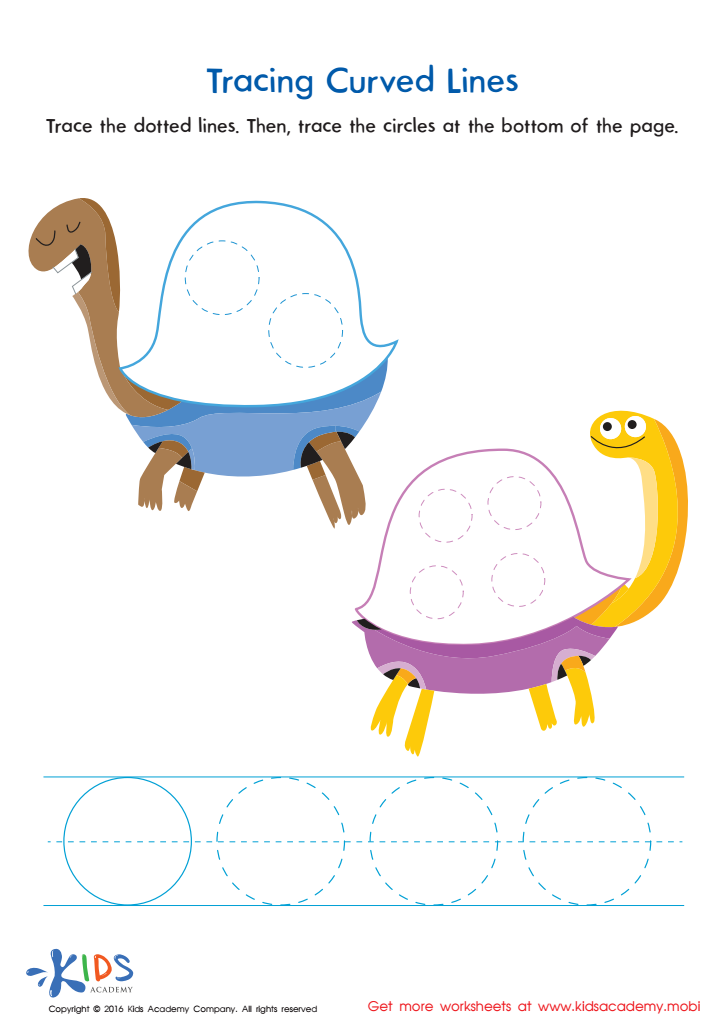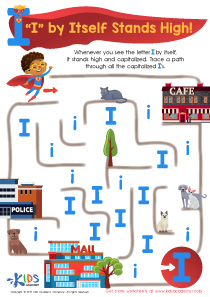Normal Tracing Lines and Curves Worksheets for Ages 3-7
5 filtered results
-
From - To
Introduce your child to the basics of writing with our "Normal Tracing Lines and Curves Worksheets for Ages 3-7." These fun and educational worksheets are designed specifically to develop fine motor skills, hand-eye coordination, and early writing abilities. With engaging tracing activities, your child will learn to control a pencil and understand the fundamental shapes that make up letters and numbers. Ideal for both classroom and home use, these worksheets make learning enjoyable and effective. Give your child a head start in writing and set the foundation for academic success with our expertly crafted tracing exercises.
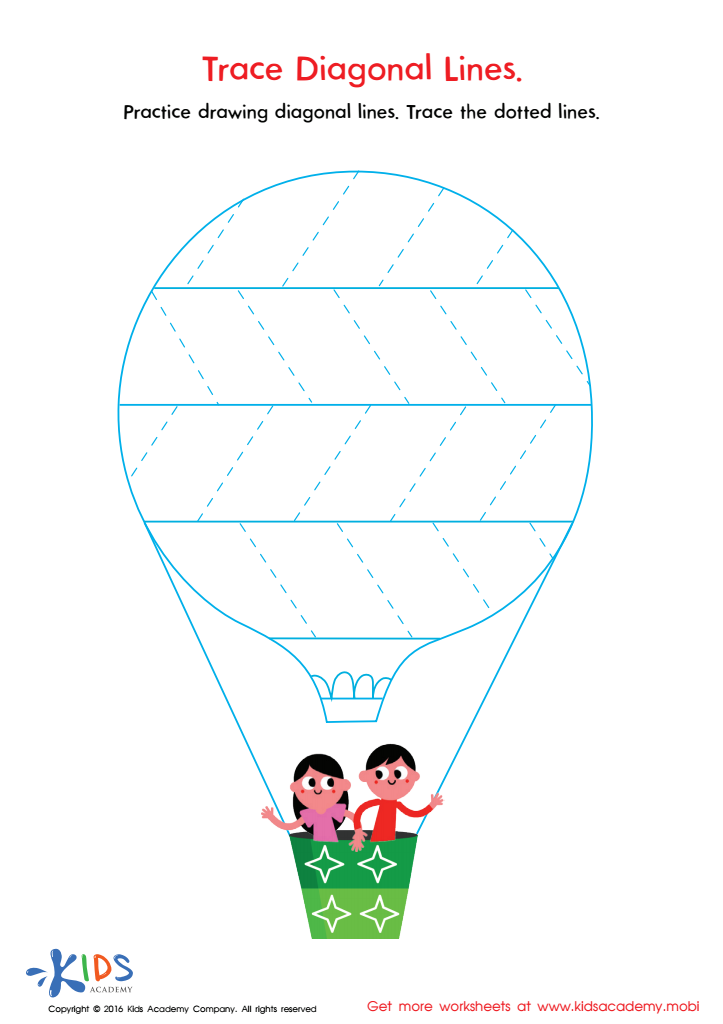

Trace Diagonal Lines Worksheet
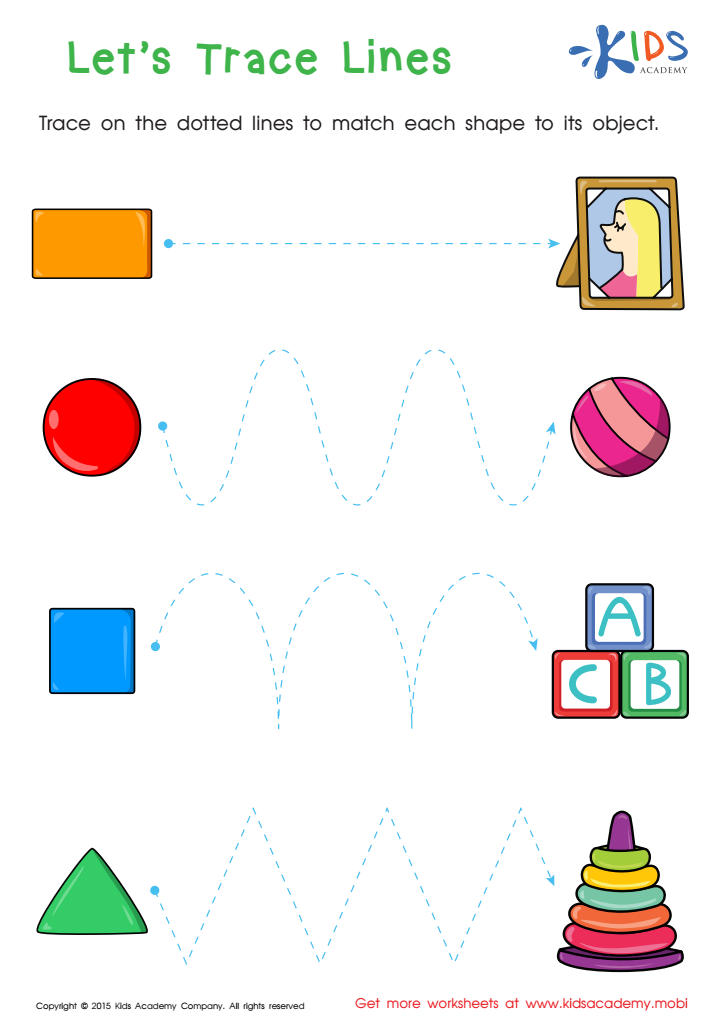

First Words: Let's Trace Lines Worksheet
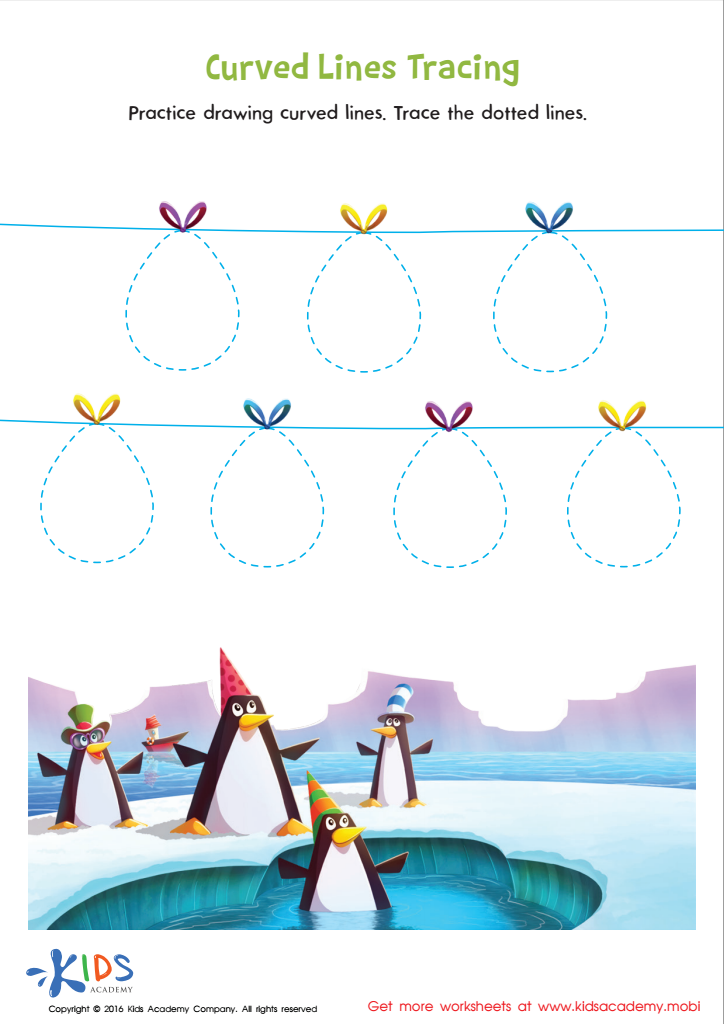

Curved Lines Tracing Worksheet
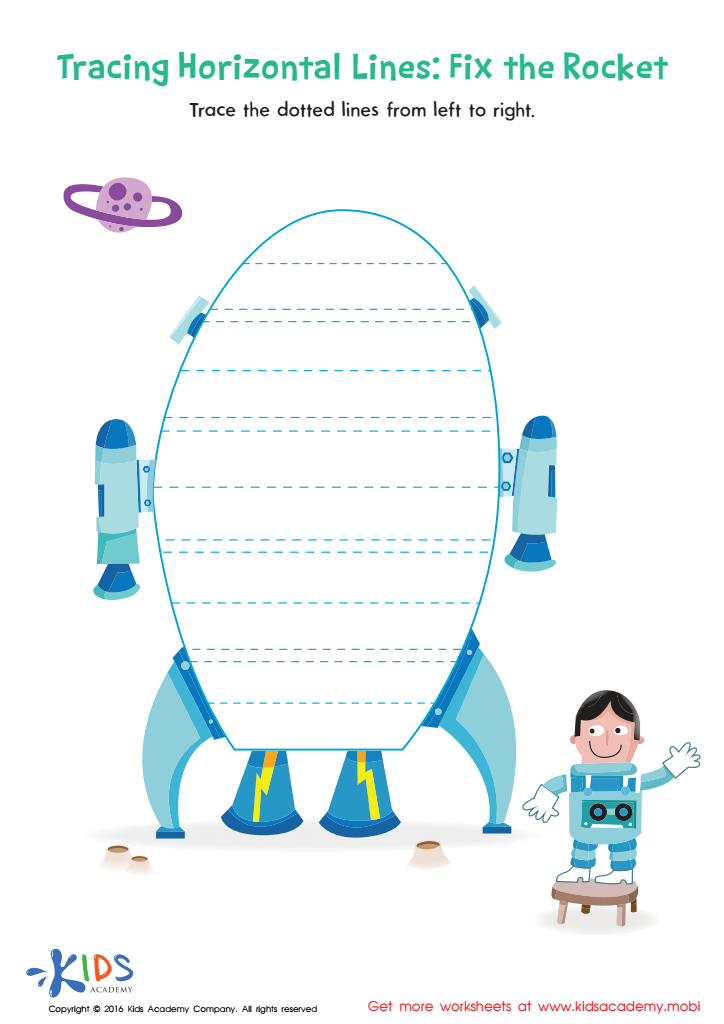

Tracing Horizontal Lines Worksheet
Normal tracing lines and curves for ages 3-7 serve as fundamental stepping stones in early childhood development, particularly in motor skills, pre-writing skills, and cognitive development. At this age, children's fine motor skills are rapidly developing. Tracing lines and curves enables them to practice holding writing instruments correctly and controlling their hand movements, laying a foundation for future writing activities.
These tracing activities also bolster hand-eye coordination, ensuring that children can guide their hands while visually following a path. Such coordinated efforts are necessary for various daily tasks, from tying shoes to using scissors or utensils. Beyond physical skills, tracing exercises strengthen cognitive abilities like attention to detail, patterns recognition, and the understanding of geometrical shapes and spatial concepts.
In a classroom or home setting, these tracing tasks contribute to a sense of achievement and boost confidence and patience. Additionally, these exercises are often among the first structured tasks that children encounter, helping them to learn how to follow directions and complete tasks from start to finish.
Therefore, incorporating normal tracing lines and curves significantly nurtures a child's overall developmental trajectory, making them crucial for parents and teachers who aim to lay a strong educational and developmental foundation.

 Assign to the classroom
Assign to the classroom
